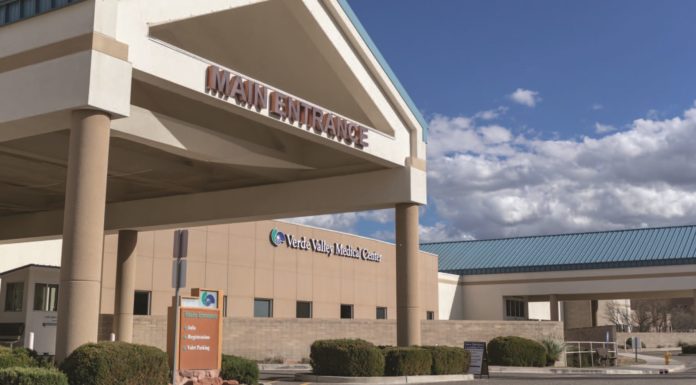Northern Arizona Healthcare recently published the results of its 2022 Community Health Needs Assessment of the Verde Valley.
“A Community Health Needs Assessment, or CHNA, provides information so that communities may identify issues of greatest concern and decide to commit resources to those areas, thereby making the greatest possible impact on community health status, NAH’s report stated. “Over the past three years, Verde Valley Medical Center has invested in improving the health of our community’s most vulnerable populations.”
NAH stated its commitment to the goal of improving the community’s health is “reflected in more than $0.5 million in community benefit, excluding uncompensated Medicare, and more than $78 million in charity care and other financial assistance programs.”
“Northern Arizona Healthcare conducted its last CHNA in 2019 and reviewed the health priorities identified through that assessment,” NAH stated. “Taking into account the top-identified needs — as well as hospital resources and overall alignment with the hospital’s mission, goals and strategic priorities — it was determined at that time that Northern Arizona Healthcare, which operates Flagstaff Medical Center and Verde Valley Medical Center, would focus on developing and/or supporting strategies and initiatives to improve access to health services, mental health & mental disorders and chronic disease.”
The CHNA evaluated population characteristics and social determinants of health, as well as overall health and mental health uses data from multiple sources, including primary and secondary [statistical] research.
“A precise and carefully executed methodology is critical in asserting the validity of the results gathered in the PRC Community Health Survey,” NAH stated. “Thus, to ensure the best representation of the population surveyed, a mixed-mode methodology was implemented. This included surveys conducted via telephone, as well as through online questionnaires. The sample design used for this effort consisted of a stratified random sample of 400 individuals age 18 and older in the Total Service Area, including 200 in the Flagstaff Region and 200 in the Verde Valley Region. Once the interviews were completed, these were weighted in proportion to the actual population distribution so as to appropriately represent the Total Service Area as a whole.”
For statistical purposes, the maximum rate of error associated with a sample size of 400 respondents with a 4.9% margin of error.
The CHNA key findings identified “Areas of Opportunity” or significant health needs of the community.
In the Verde Valley, areas of opportunity included access to primary care physicians, adult routine medical care, infant health and family planning, unintentional deaths such as motor vehicle accidents, a variety of mental health concerns including suicide, nutrition, obesity and low food and recreation access, substance abuse, lung disease deaths and COVID-19 vaccination.
Leading causes of death in the Verde Valley included cancer, heart disease and stroke.
In the assessment process, key informants were asked to rate the severity of health issues in the community; their ranking of these issues informed the following priorities:
- Mental Health
- Substance Abuse
- Access to Health Care Services
- Heart Disease & Stroke
- Nutrition, Physical Activity & Weight
- Injury & Violence
- Disability & Chronic Pain
- Cancer
- Respiratory Disease
- Infant Health & Family Planning
- Sexual Health
Additional findings indicated that 13% of the Verde Valley’s population is living in poverty, while Flagstaff’s poverty rate is higher, at 17.6%.
The assessment also showed that more Verde Valley residents could afford to pay a $400 emergency expense in comparison to Flagstaff residents.
However, the two areas scored similarly on the percentage of children living in poverty [17.2%], housing expenses exceeding 30% of income [about 30%] and lost wages due to the pandemic [between 24 and 31%].
Other similarities included unhealthy and unsafe housing conditions [between 9.8 and 15.5%], fair/poor overall health [between 17 and 19.8%] and lack of health insurance for age 18-64 [between 7.9 and 12.5%].
In both the Verde Valley and Flagstaff, more than 20% rated the local health care as fair or poor.
The assessment also indicated that the Verde Valley has fewer primary care doctors than Flagstaff; however, more Verde Valley residents had routine checkups in the past year than Flagstaff.
“Verde Valley Medical Center and Northern Arizona Healthcare will use the information from this Community Health Needs Assessment to develop an Implementation Strategy to address the significant health needs in the community,” NAH stated. “While the hospital will likely not implement strategies for all of the health issues listed above, the results of this prioritization exercise will be used to inform the development of the hospital’s action plan to guide community health improvement efforts in the coming years.”
For more information, visit nahealth.com



